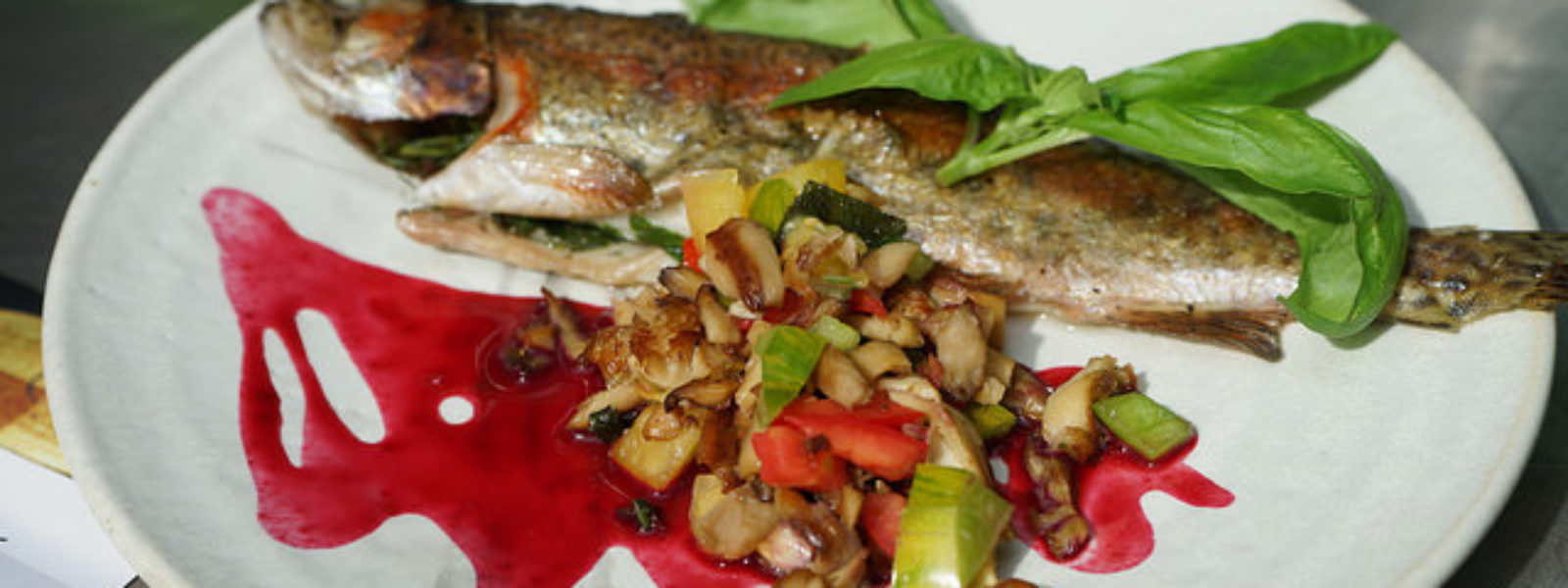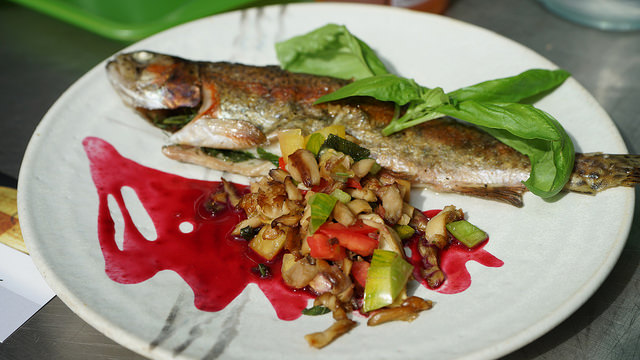Health benefits of adding more fish to your diet
By Jenna Carter, UMN Public Health and Nutrition Program
Originally published April 27, 2015.
Fish provides an excellent source of omega-3 fatty acids, vitamins, and minerals that benefit your overall health. Omega-3 fatty acids are essential in the diet because our bodies cannot produce them on their own. Trout, tuna, salmon, herring, mackerel and sardines are especially great sources of omega-3’s. Consuming them are also a great way to obtain low-fat protein. The American Heart Association recommends eating at least two servings per week to help prevent heart disease, lower blood pressure, and reduce the risk of heart attacks and strokes.
Fish is a highly nutritious food source, but you must be very careful when choosing the type you will consume. Because of their diets, fish can accumulate toxins very easily and thus reduce their food safety. A few toxins include mercury and polychlorinated biphenyls (PCBs). You can reduce exposure to PCBs by removing the skin and any surface fat before cooking. Mercury is much harder to avoid. Mercury becomes an air pollutant from the burning of coal and other wastes. It then makes its way into streams, lakes and other bodies of water and is transformed into methylmercury by bacteria. The bacteria contain high amounts of mercury that are then consumed by fish. Mercury is especially toxic to the brain and nervous system of unborn and young children. The FDA advises women who are pregnant or nursing and young children not to eat fish containing high amounts of mercury. These include shark, swordfish, king mackerel, and tile fish. All other fish sources should be limited to no more than 12 ounces per week. All people should limit their intake of fish containing high levels of mercury to one 6oz serving per week.
We are lucky enough to live in Minnesota which has an abundance of freshwater fish. For those who enjoy fresh fish and would like to continue to enjoy it throughout the winter, preservation can be done through freezing, canning, smoking, or pickling. If you are interested in learning how to properly preserve fish, please visit the University of Minnesota Extension.
Salmon, cod and trout are available at the market from vendors:
Recipes:
- Coffee-Spiced Salmon
- Cod with Smoked Shiitake Butter
- Smoked Trout and Potato Croquettes
- Simple Garlic Rubbed Salmon with Sweet Basil Dressing
- Grilled Trout with Chokecherry-Herb Sauce
- and many more in our archives!


